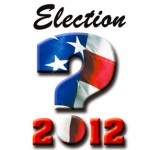‘No party preference’ growing in popularity
By Torey Van Oot, Sacramento Bee
Congressional candidate Linda Parks isn’t one for conventional choices.
 As she tells voters in a recent television ad, her favorite ice cream flavor is not chocolate or vanilla, but the nuts-and-marshmallow-loaded Rocky Road.
As she tells voters in a recent television ad, her favorite ice cream flavor is not chocolate or vanilla, but the nuts-and-marshmallow-loaded Rocky Road.
And her chosen party preference on the June 5 ballot?
“None.”
“I’ve had longtime supporters tell me, ‘I don’t even know what party you are.’ And I like that,” said Parks, a Ventura County supervisor who has been both a member and, more recently, a punching bag of both the Republican and the Democratic parties. “I like the fact that they can’t peg me as one party or the other.”
Parks is one of 36 candidates with “no party preference” running for state and federal office in California this year, the first time the option is available for primary candidates.
Her candidacy for the 26th Congressional District is getting attention because of the chance she’ll succeed in becoming the first independent elected to the House of Representatives since 2004.
No-party-preference candidates make up just a fraction of the more than 500 people running for state and federal office on the June ballot. But some observers say a win – or even a good show – by Parks or other no-party-preference candidates could pave the way for more independents to run for elected office in California.
“In this climate with the tea party and the Occupy movement and the anti-incumbent sentiment, if it turns out that that does translate into ‘no-party-preference’ candidates winning, we can expect to see all sorts of people shedding their party affiliation in the future,” said Kimberly Nalder, an associate professor in the CSU Sacramento, Department of Government.
The emergence of no-party-preference candidates is a direct result in a voter-approved overhaul of the state’s election system. Under the old system, independents eyeing elected office would have to collect voter signatures after the primary for November ballot access. Now, under the top-two primary, independent candidates, described as “party preference: none,” run alongside Democrats, Republicans and candidates from minor parties for one of two spots in the November runoff.



This is certainly the growing trend. Both political parties have let the voters down so much that there is little support for any of the current crop of politicians. The day that corporations became “people” was the day that most Americans lost any hope of their vote meaning anything.
Sadly, any attempt at creating a new party will be co-opted quickly by one of the existing parties. The Tea Party movement is a perfect example. Any good that the TP brought to the table was quickly destroyed by the GOP.